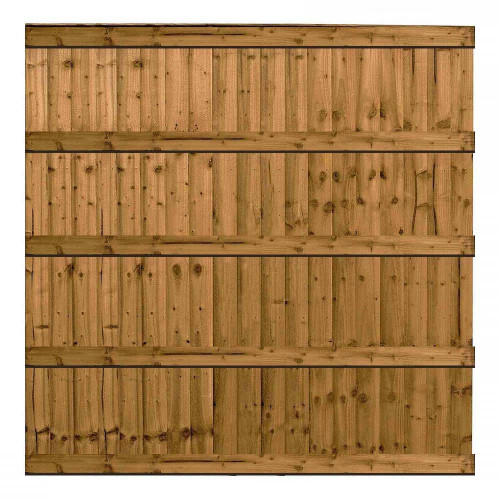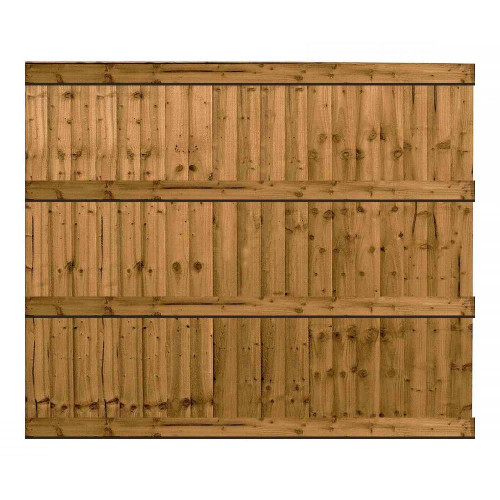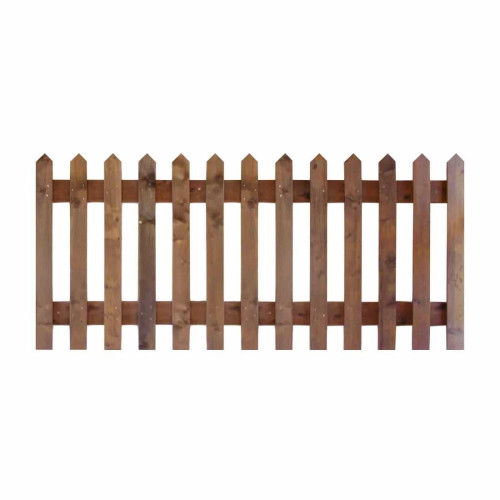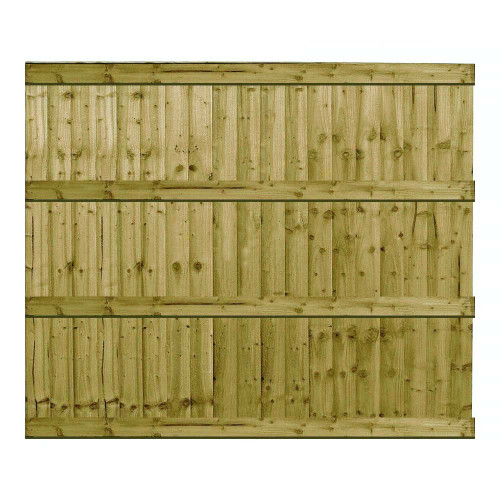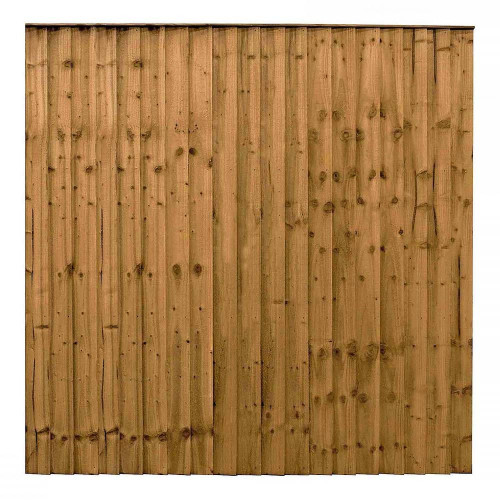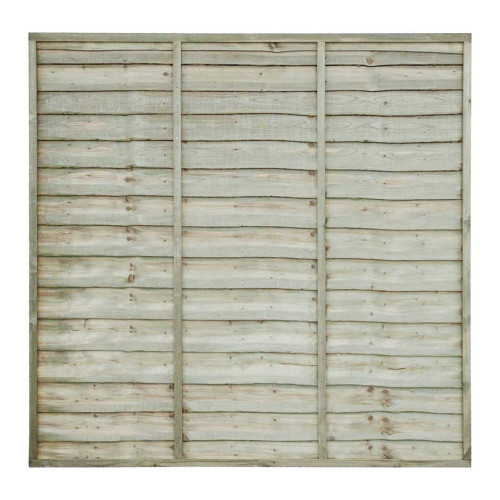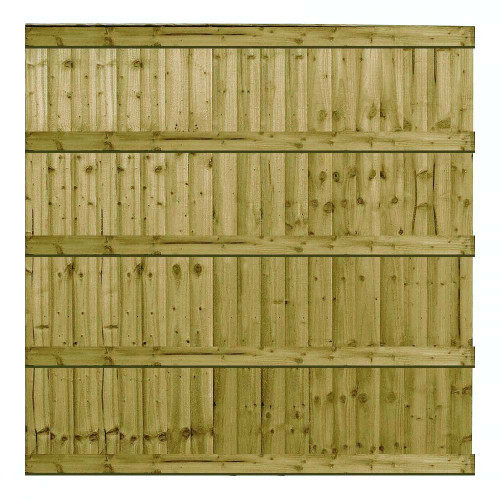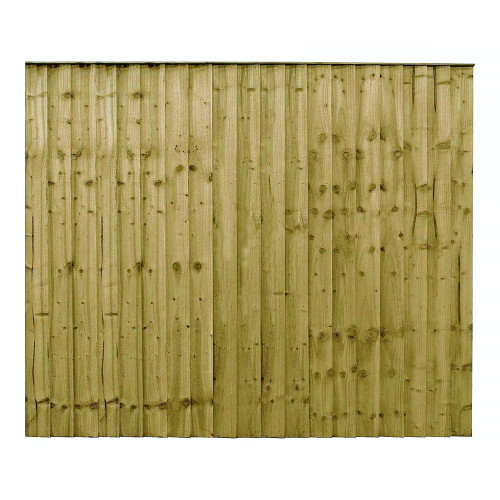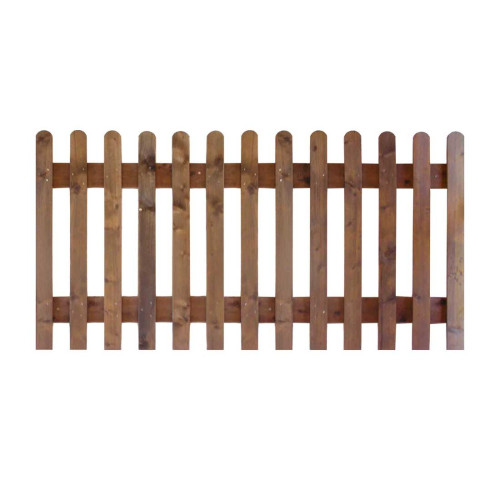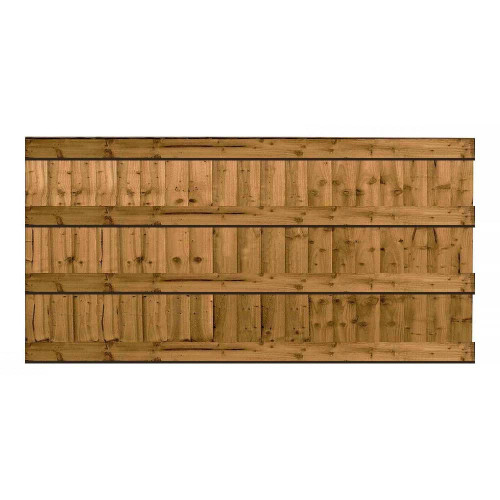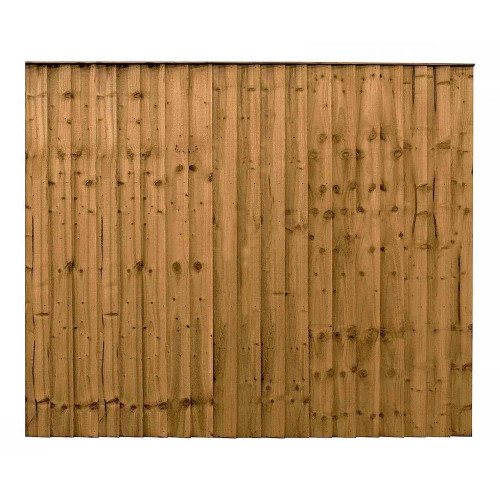Fence Panels
Transform your garden into a private oasis with our premium fence panels. Designed with homeowners, DIY enthusiasts, and gardeners in mind, these panels offer the perfect blend of privacy, security, and style. Crafted by East Coast Fencing, each panel is pressure treated to ensure longevity and resilience against the elements. With over 200,000 fence panels sold and more than 10,000 five-star reviews on Trustpilot, our quality is unmatched. Purchase online today and enjoy free delivery on orders over £99.
Our fence panels cater to a variety of aesthetic preferences, seamlessly enhancing any outdoor space. Whether you're aiming for a traditional look or a modern touch, our selection promises to meet your needs. The high-quality materials used in the construction of our panels guarantee durability, ensuring your investment stands the test of time. Join thousands of satisfied customers who have chosen East Coast Fencing for their fencing needs.
Installing these panels is more than just a practical choice; it's an opportunity to showcase your creativity and personal style. Browse and order with ease, making the process convenient and efficient. Discover the difference that high-quality fencing can make in your garden and home life.
Choosing East Coast Fencing means choosing excellence. Our commitment to quality and customer satisfaction is reflected in every piece we produce. Whether you're embarking on a new project or upgrading your existing fence, our panels provide a reliable solution that enhances the beauty and value of your property.
Closeboard Fence Panels
Closeboard fence panels are renowned for their strength and durability. These panels provide a robust solution for enclosing your garden, maintaining privacy, and defining your property boundaries. At East Coast Fencing, our closeboard panels are constructed with pressure-treated timber, ensuring they withstand harsh weather conditions and remain sturdy for years to come. Trust in the quality that has earned us over 10,000 five-star reviews.
The design of closeboard fence panels is both classic and versatile, making them suitable for any garden aesthetic. Their overlapping vertical boards create a tight seal, offering superior privacy and noise reduction. Whether you're looking to create a serene retreat or a secure play area for children, closeboard panels are an excellent choice.
Installation is made easy with our expertly crafted panels. Each piece is designed to fit seamlessly with its counterparts, allowing for a straightforward assembly process that even novice DIY enthusiasts can tackle with confidence. Our commitment to quality materials and construction means you can enjoy a beautiful, functional fence that enhances your property for years to come.
Investing in closeboard fence panels not only elevates the appearance of your outdoor space but also adds value to your home. With the backing of East Coast Fencing's reputation and the convenience of buying online, you're just a few clicks away from transforming your garden into a private haven.
Ultra Heavy Duty Closeboard Fence Panels
For those who demand the utmost in strength and resilience, our ultra heavy duty closeboard fence panels are the ultimate choice. Specifically designed for maximum durability, these panels are ideal for withstanding the toughest conditions. Made from high-quality, pressure-treated timber, they promise to deliver long-lasting protection and peace of mind for your property.
The ultra heavy duty closeboard panels feature more backing rails, enhancing their ability to endure high winds and other environmental stresses. Their solid construction ensures that your garden remains a secure and private sanctuary, no matter what the weather brings. This makes them a popular choice among discerning homeowners and garden enthusiasts alike.
While prioritising strength, these panels do not compromise on aesthetics. Their design retains the classic appeal of traditional fencing, with a refined finish that complements any garden style. The versatility of the ultra heavy duty closeboard panels allows you to enjoy both function and form, making them a worthwhile investment for any home.
Ordering ultra heavy duty closeboard panels from East Coast Fencing is simple and hassle-free. Our website provides detailed product information and easy purchasing options, ensuring you receive the best in fencing solutions with minimal effort. Experience the confidence that comes from selecting a product backed by a wealth of satisfied customers and industry expertise.
Decorative Fence Panels
Enhance your garden's charm and character with our range of decorative fence panels. These panels are perfect for those looking to add a touch of elegance and style to their outdoor spaces. At East Coast Fencing, we offer a variety of designs that allow you to express your personal taste and elevate the aesthetic appeal of your garden.
Our decorative panels are crafted with the same high-quality materials as our standard offerings, ensuring they are both beautiful and durable. Each panel undergoes a pressure treatment process to protect against decay and maintain its looks over time. With East Coast Fencing, you're guaranteed exceptional quality and style in every piece.
Decorative fence panels can serve as a stunning backdrop for your garden, complementing your plants and flowers while adding structure and interest. They are an excellent choice for creating focal points or defining different areas within your outdoor space. Whether you're aiming for a contemporary look or a more traditional feel, our panels provide the versatility to achieve your vision.
Choosing decorative fence panels from East Coast Fencing means investing in a product that enhances your garden's beauty while providing practical benefits. Our online store makes it easy to browse and purchase, offering convenience and peace of mind. Transform your garden into a masterpiece of design and functionality with our exquisite decorative panels.
Omega Lattice Fence Panels
Omega lattice fence panels are designed to combine functionality with stunning visual appeal. These panels feature an elegant lattice top, which adds a decorative touch to the sturdy timber base. Ideal for enhancing privacy without sacrificing style, Omega lattice panels are a favourite among homeowners looking to create a sophisticated garden atmosphere.
Constructed from pressure-treated timber, these panels are built to last. The lattice design allows light to filter through while maintaining a sense of enclosure and security. This makes them perfect for gardens that need a balance of openness and seclusion, offering a harmonious blend of aesthetics and practicality.
The Omega lattice fence panels are versatile, capable of complementing both modern and traditional garden designs. Their intricate pattern adds depth and interest to any space, making them an excellent choice for creating a unique garden retreat. Whether you're enclosing a seating area or delineating a garden section, these panels provide an attractive solution.
Purchasing Omega lattice fence panels from East Coast Fencing is straightforward and efficient. Our user-friendly online platform provides all the information you need to make an informed choice, and our commitment to quality ensures that you're investing in a product that will stand the test of time. Enhance your garden with the elegance of Omega lattice panels today.
Horizontal Slatted Fence Panels
Horizontal slatted fence panels offer a contemporary take on traditional fencing, providing a sleek and stylish aesthetic that complements modern garden designs. These panels feature evenly spaced horizontal slats that create a striking visual effect while offering privacy and security for your outdoor space.
Crafted from high-quality, pressure-treated timber, our horizontal slatted panels are designed to withstand the elements and maintain their appearance over time. Their robust construction ensures they provide a reliable boundary for your garden, enhancing its overall appeal and functionality.
The clean lines and minimalist design of horizontal slatted fence panels make them an ideal choice for urban gardens or any space seeking a modern edge. They can be used to create a seamless transition between indoor and outdoor areas, adding a touch of sophistication to your property.
Ordering horizontal slatted fence panels from East Coast Fencing is simple and convenient. Our online store offers a wide selection of products, complete with detailed descriptions and purchasing options, ensuring you find the perfect fit for your garden. Experience the blend of style and substance with our contemporary slatted panels.
Double Slatted Fence Panels
Double slatted fence panels provide a distinctive and dynamic option for those looking to make a statement with their garden fencing. These panels feature two layers of horizontal slats, creating a unique visual texture that adds depth and interest to any outdoor space.
Built with high-quality, pressure-treated timber, our double slatted panels are designed for durability and longevity. They provide excellent privacy and security while allowing light and air to flow through, creating a balanced environment that enhances the enjoyment of your garden.
The innovative design of double slatted fence panels makes them a popular choice among homeowners who appreciate a modern aesthetic with a touch of creativity. They can serve as a striking backdrop for plants and flowers or act as a standalone feature within your garden design.
Purchasing double slatted fence panels from East Coast Fencing is a seamless experience. Our online platform provides all the necessary details to help you choose the right panels for your needs, ensuring you receive a product that meets your expectations for quality and style. Elevate your garden with the unique charm of double slatted panels.
Single Slatted Fence Panels
Single slatted fence panels are an excellent choice for those seeking simplicity and elegance in their garden design. These panels feature a straightforward arrangement of horizontal slats, offering a clean and minimalistic look that complements any outdoor setting.
Made from premium, pressure-treated timber, single slatted panels are built to withstand the elements and maintain their aesthetic appeal over time. Their sturdy construction ensures that your garden remains secure and private while contributing to an inviting atmosphere.
The versatility of single slatted fence panels allows them to blend seamlessly with various garden styles, from contemporary to traditional. They provide a subtle yet effective way to define boundaries and create a cohesive look for your outdoor space.
Ordering single slatted fence panels from East Coast Fencing is easy and efficient. Our comprehensive online store offers a wide range of options, complete with detailed descriptions and purchasing instructions, ensuring you find the perfect match for your garden. Experience the understated elegance of single slatted panels and transform your outdoor environment.
Picket Fence Panels
Picket fence panels are a timeless choice for creating charm and character in any garden. These iconic panels feature evenly spaced vertical boards with pointed tops, providing a classic look that evokes a sense of nostalgia and warmth.
At East Coast Fencing, our picket fence panels are crafted from high-quality, pressure-treated timber, ensuring they are both durable and visually appealing. They offer a perfect balance of style and function, providing an attractive boundary while defining your property's perimeter.
Picket fence panels are ideal for enhancing the appeal of front gardens, pathways, and flower beds. Their open design adds a welcoming touch to your home, inviting guests with their quaint and charming appearance. Whether you're looking to enhance a cottage-style garden or add a touch of tradition to a modern space, picket fences are a versatile choice.
Choosing picket fence panels from East Coast Fencing means investing in quality and craftsmanship. Our online platform offers a convenient way to browse and purchase, ensuring you receive a product that meets your standards and enhances your garden's beauty. Capture the essence of timeless elegance with our picket fence panels.
Waney Lap Fence Panels
Waney lap fence panels offer a rustic and natural appearance, making them a popular choice among those seeking an organic look for their garden. These panels feature overlapping horizontal boards with a rough-sawn finish, creating a charming, textured effect that adds warmth and character to any outdoor space.
Crafted from pressure-treated timber, our waney lap panels are designed for durability and weather resistance. Their sturdy construction ensures that your garden remains private and secure, while their rustic design enhances the overall ambiance of your property.
The flexibility of waney lap fence panels allows them to integrate seamlessly with various garden styles, from traditional to contemporary. They provide an effective way to delineate boundaries while adding aesthetic appeal, making them a versatile choice for any homeowner.
Purchasing waney lap fence panels from East Coast Fencing is straightforward and convenient. Our online store offers a wide selection of products, complete with detailed descriptions and easy ordering options, ensuring you find the perfect fit for your garden. Experience the natural beauty and charm of waney lap panels and elevate your outdoor space.
Fence Panels Delivered
At East Coast Fencing, we understand the importance of convenience when it comes to enhancing your garden. That's why we offer a seamless delivery service for all our fence panels, ensuring that your purchase reaches your doorstep in perfect condition and ready for installation.
Our delivery service is designed with our customers in mind, providing a hassle-free experience that saves you time and effort. With free delivery on orders over £99, you can enjoy the benefits of our high-quality fence panels without worrying about additional costs or complexities.
We take pride in our efficient and reliable delivery process, ensuring that your order arrives on time and in pristine condition. Our dedicated team is here to support you every step of the way, from purchase to delivery, providing peace of mind and a smooth experience.
Choose East Coast Fencing for your fencing needs and enjoy the convenience of our exceptional delivery service. Our commitment to quality and customer satisfaction means you're investing in a product and service that enhances your garden and home life. Transform your outdoor space with the ease and reliability of East Coast Fencing's delivery service.



